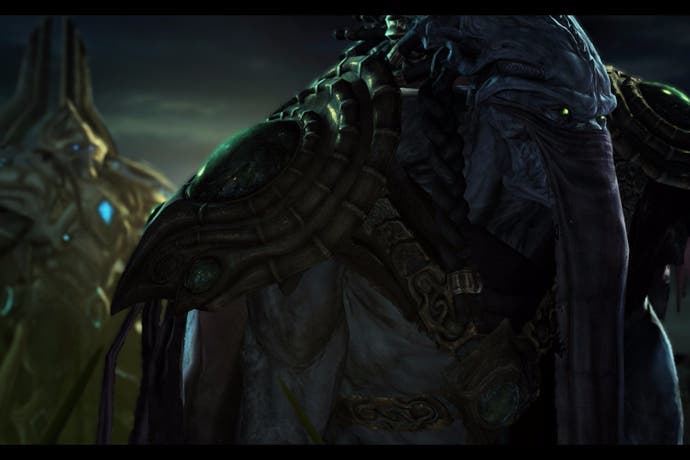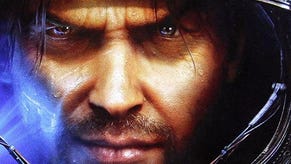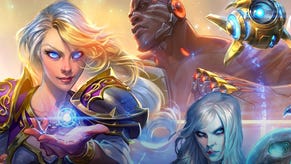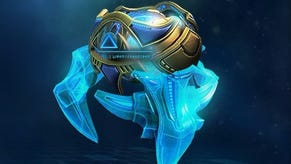StarCraft 2: Legacy of the Void's campaign is entertaining, but not quite excellent
And in the end...
Editor's note: Given StarCraft 2's split between single-player and multiplayer - and the different demands made by both modes - we're splitting our impressions, leading with this piece by Paul Dean on the campaign. We'll be following up with a feature on the multiplayer in the near future.
We should all be bored of this by now. We should be bored of dragging cursors across great twitching throngs of identical units. We should be bored of fixed isometric perspectives. We should be bored of constructing additional pylons. We've been doing this sort of thing for two decades (think about that, two decades) and perhaps, in the hands of another developer, it would now be boring. But it's to Blizzard's credit that Legacy of the Void is able to take what is one of real-time strategy's most traditional formulas and still find ways to tweak its inputs to produce satisfying, engaging and even outright exciting results. Legacy of the Void builds Starcraft's ridiculously overwrought story to a grand and melodramatic climax, doing so while still managing to somehow, somehow teach their old dog some new tricks.
Legacy of the Void is also ridiculous. It's absolutely bursting with plot, plot all the time. Constant, inescapable plot. Cutscene after cutscene, dialogue after dialogue shows keeps you up to date with every beat in the the story of the noble Protoss and their battle again the really quite trendily-dressed black-and-red forces of the Big Bad Amon. Blizzard's extremely fancy cinematics, impressive and dynamic, are all explosions or revelations or epiphanies, with wall to ceiling bad dialogue ("Much has changed since your era!" "No! It cannot be!") and an almost constant raising of the stakes.
It may matter to you. It may not. You may find it very cool to see Kerrigan and Artanis fighting side by side, or you may not care for it at all. But it is pretty cool to play as Kerrigan and Artanis, to help them stomp and smash their way through hordes of enemies, using both passive and active abilities in a way that feels almost like an action RPG. You may not care about the planet you're defending or the reason for your last stand, but it doesn't make those missions any less frantic, any less challenging or any less good.
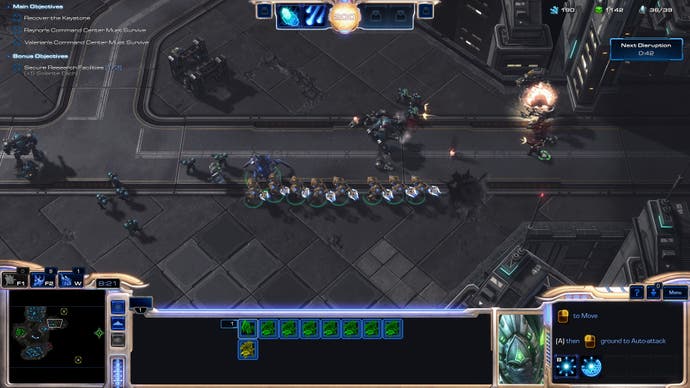
And is it even a space opera? Legacy of the Void is much closer to a space panto but, like any good pantomime, it gets you involved, it gives you your part to play and it leaves you feeling, if not enriched, certainly entertained.
The single-player campaign constantly changes gears, only sometimes offering the traditional RTS staple of base-building and resource gathering, mixing these in with races against time, with co-operative missions, with chances to control hero characters at key points. Within a framework so established, so traditional, little is allowed to go stale. What's more, Blizzard has done a fine job of getting the balance right. A "Normal" campaign is challenging, but never cruel, constantly pressing the player without suffocating them, while the "Brutal" setting will happily suit any masochistic, octopus-limbed micro veterans of old who might be brave enough to try it.
The big new toy at the centre of this campaign is the Spear of Adun, a mothership that acts as a base for the Protoss and also as a customisation tool. Between its decks, and in addition to more opportunities for conversation and plot embellishment, are the menus that allow for army management and special powers. As the campaign progresses, new units are unlocked that can serve as your default infantry, support or tanks, all of which can be swapped in and out between missions, should restless generals want to reconfigure. Special powers, earned by gradually collecting the key resource solarite that is scattered across levels, allow for more godlike interventions, including vengeance from on high.
These too can be reconfigured between missions (or for the purpose of retrying them) and can significantly change the pace of, even the course of, a battle. Depending upon your personal selection, you can call in reinforcements, dramatically accelerate unit production or command horridly powerful orbital weaponry. Surplus solarite not spent on unlocking these various passive and active abilities can also be put toward other incremental advantages, to your taste, and while I'm sure many players will appreciate production bonuses or extra troops, I find the searing heat of my death ray not only rather exciting, but also a wonderful way to clear out an entrenched foe, an appropriate antidote to tenacious turtlers.
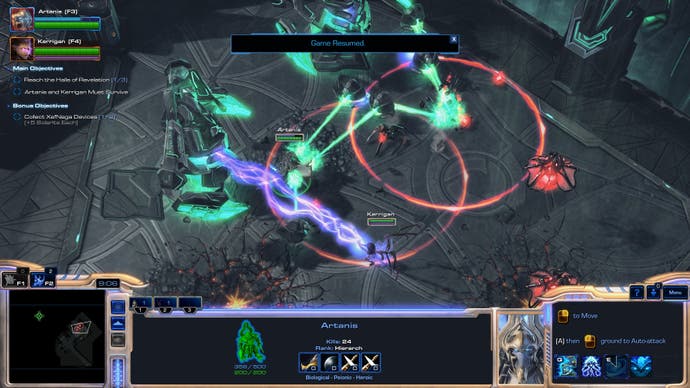
And that's the thing about these subtle little extras that Legacy of the Void includes, these little tweaks and tinkerings: they all have their purpose. Blizzard aren't simply experimenting with their missions and with their modifications, but adding things that change how you play, keep the game well clear of complacency.
Not that it doesn't help to have so much turned up to eleven. Many missions are grand in their realisation, inevitably demanding, providing or ultimately ending in great swathes of units. At the same time, the introduction is such that new players needn't feel intimidated if Legacy of the Void is their first introduction to the silly superlatives of Starcraft. The campaign offers a relatively gentle introduction, though it will likely feel prosaic, even patronising to regulars. Those who want a much more immediate challenge will find it in the additional prologue campaign, which doesn't so much take the gloves off as immediately start severing fingers.
It's difficult to imagine where else Blizzard might be able to take Starcraft and it feels like Legacy of the Void is not only a conclusion to the series, but perhaps even a conclusion to the format, isometric real-time strategy taken to its logical endpoint, every possible idea and avenue explored before the concept is finally put to bed. While it's a spectacle, it's not spectacular. Endlessly entertaining, it never quite slides into excellence, never quite matches Blizzard at their very best. Nevertheless, nobody could ever, ever accuse it (or them) of being boring.
If the appellation of space panto is too emasculating, then what Legacy of the Void most feels like is space rock. No, space metal: Bombastic, elaborate, shiny, often silly and yet still a lot of fun. It's the Iron Maiden of video games and, while some might consider Iron Maiden to be somewhere between ludicrous and outrageous, they are nevertheless, accomplished, capable and undeniably entertaining.
